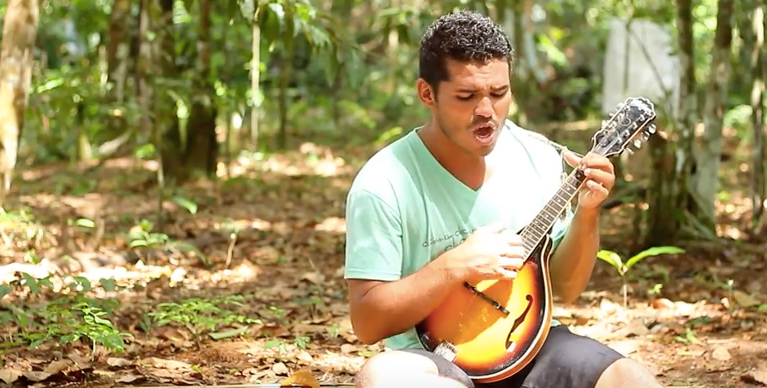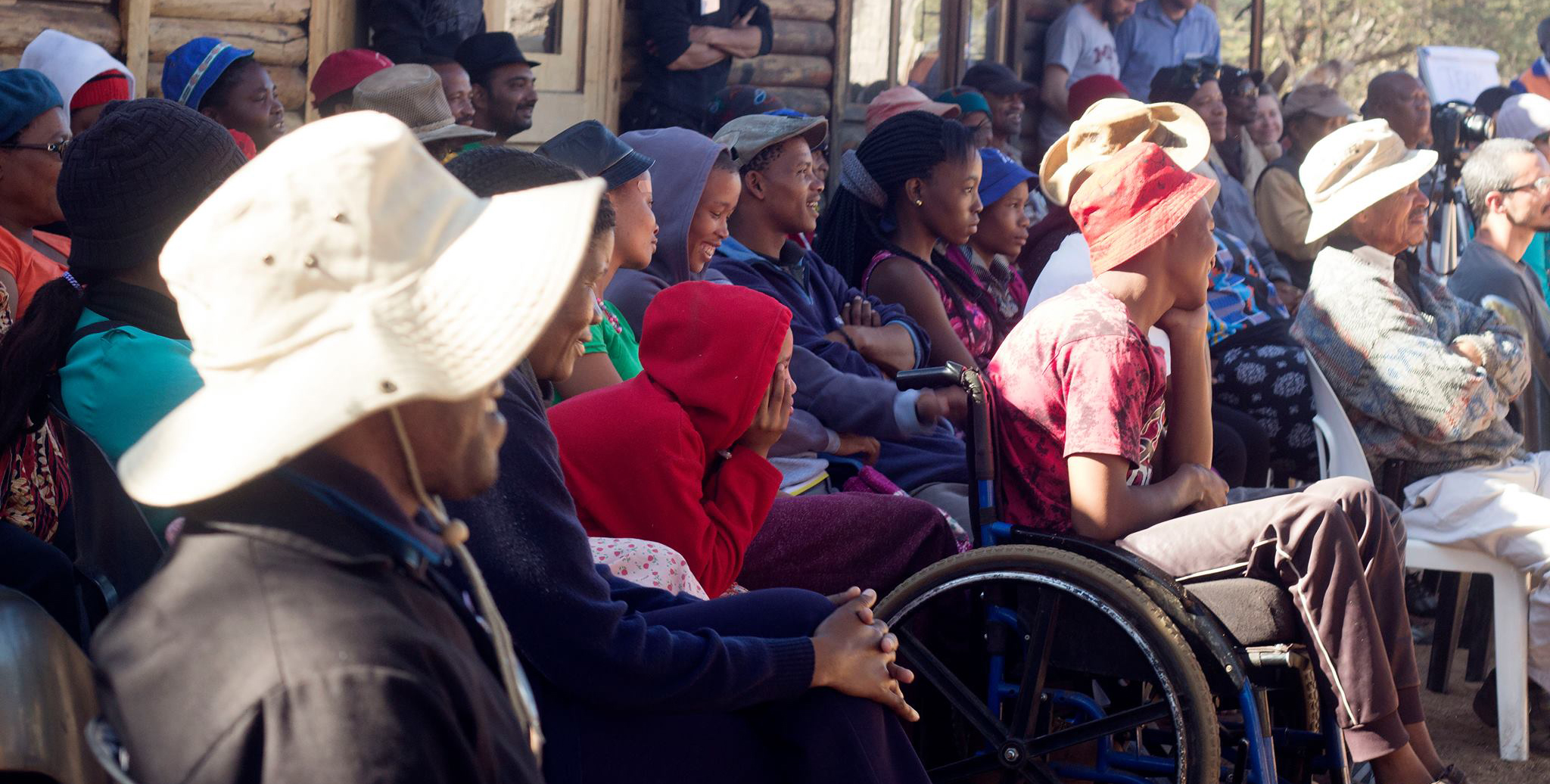Makerspaces for Social Good: What We're Learning Working with Community Innovation Centers Around the Globe
A visitor to the Vila Nova Esperança Community Innovation Center in São Paulo, Brazil works on her project using a soldering iron.
Over the past few years, IDIN has provided support to a growing network of community innovation centers around the globe. Today, IDIN supports 12 innovation centers in eleven different countries ranging from Brazil to Kenya, Nepal to Uganda.
We caught up with IDIN’s new Innovation Center Coordinator Molly Rubenstein and MIT D-Lab Associate Director Kofi Taha to learn more about this exploratory approach and what they’re learning.
First things first – what is an innovation center? How is it different than a makerspace?
Molly: IDIN-affiliated innovation centers provide resources to community members seeking to create technologies or technology focused businesses that will make a positive social impact in areas affected by poverty.
It’s that mission toward creating social good that distinguishes an innovation center from a makerspace, a fab lab, or a hacker space—people in these type of places are sometimes aiming for social impact, but sometimes they are just interested in making something really cool, which is great but just not our only focus.
Our innovation centers may use traditional or digital fabrication techniques, or might create software or hardware, but all are trying to improve the lives of the innovators they’re interacting with as well as their greater community.
Generally speaking, innovation centers provide three things: tools to help make things, education in design and tool operation, and space to enable that process to happen. More and more, they also offer education around the business and entrepreneurship side of things.
How does IDIN support innovation centers, especially in the early start-up stage?
Kofi: Initially, our focus was trying to make some of the upfront capital investments that are necessary for these spaces to get up and running: tools and resources that new spaces would need in communities where it’s sometimes difficult to obtain access to those resources.
Over time, we encountered other makerspaces with similar social missions that had already found that start-up capital but were looking for things like curriculum resources, examples of other revenue models, and strategies for engaging local community members. So we have started to develop tools, guides and communications platforms, and are actively collecting and aggregating great resources that are already out there. It’s one of the reasons we’re excited to be exploring new platforms like Hylo and WhatsApp, which are different avenues for sharing resources beyond money, because those are the things that are going to allow these organizations to survive and thrive well into the future.
Molly: One of the things I learned when working at Artisan’s Asylum (a Somerville, MA-based makerspace) is that the most effective thing I could do for a maker who came to us for help was connect them to other makers trying to do similar things. Far beyond what I or our staff could offer, the most remarkable developments came from their interactions with a dynamic and diverse network of like-minded people. My job was simply to enable and provoke those interactions. That’s what we’re trying to do with this network of innovation center partners.
What role can innovation centers play in community innovation?
Molly: Many of our innovation centers are trying to engage young people and expose them to ideas for future lives for themselves that they would not have otherwise envisioned. Others are trying to improve the lives of adults who are working in agricultural or jobs that are unpleasant, onerous, unhealthy, or dangerous. They introduce innovation and design as a method to help improve the quality of life as workers in those jobs, or to increase efficiency and production.
Kofi: We have the great privilege to work in many different contexts and cultures, but one common theme we hear about a lot is the transformation that happens for an individual who learns to create, and the ripple effect in a community when someone starts to see themselves as a problem-solver. It’s similar to a kind of hometown pride that we can all relate to, a positive force in a community, whether we’re looking in huge cities like São Paulo or rural areas like Kafue in Zambia. People start to view these innovation centers as places where hopeful, creative change makers can thrive and make an impact on their communities.
Molly: And the wider IDIN Network provides a community for people who might otherwise feel that they don’t quite fit or have a place. It puts them together with a group of people and resources that validates their inherent and unusual abilities and allows them to flourish.
How do you measure the impact these innovation centers are having on the community?
Kofi: We’re looking at what technologies are produced, what kinds of businesses are being created, and whether they are creating jobs, improving yields, impacting technology adoption rates, etc. We care about those metrics, and we’ll continue to track those and use them to understand what kind of impact local innovation centers can have. At the same time, we are also trying to figure out ways to similarly track and evaluate the influence on more difficult things to measure like self-efficacy and confidence, social influence and networking effects, and changes in an individual’s or community’s outlook on the future.
How does IDIN help innovation centers connect and learn from one another?
Molly: We’re trying to both create a sense of a community and a feeling of mutual support, and also create an easy way to share information, resources and requests among a network of innovation centers. A lot of that is happening online and through phone calls, but we’re also exploring opportunities to make human contact between the centers. We’re facilitating exchanges among innovation centers that are close to one another. IDIN Network members Bernard Kiwia from Tanzania and Robert Shimaingo from Zambia recently had a knowledge exchange and visited each other’s centers. We’re also exploring the idea of an innovation center summit so we can learn from one another face-to-face in a group setting.
What are some of IDIN’s best practices for supporting innovation centers thus far?
Molly: Based on our combined experiences, we feel strongly that there’s no cookie cutter “makerspace in a box” that you can drop into any context and see thrive. The process of engaging a community to figure out what they need and want, and building upon the richness of resources and opportunities in that environment to create something that is uniquely a response to that community and that context is crucial to a center’s success in delivering upon its mission.
Kofi: In developed economies, many makerspace revenue models focus on membership dues and fees for classes, and many of our innovation centers are not working in communities where there’s a strong ability to pay, so it is necessary to be creative about generating funding. We’ve also learned that it is a mistake to imagine that there’s going to be a single revenue stream to take care of your needs. These spaces have to look at an array of potential revenue streams, offering services to a variety of different partners.
Another thing we learned was unexpected. If you had asked me a year ago if I would recommend a “Field of Dreams” model, you know the “build it and they will come” thing, I would have said that is doomed to fail. I would have said that the key ingredient for success is an already active community that is clamoring for a space to work or a place to share tools and that a successful makerspace would be meeting that clear demand. But in some of the communities where these innovation centers have emerged, there has been a lot of convincing and inviting, a lot of persuading the community of the center’s value. And we’ve learned that this “push model” is not the automatic failure mode that I guessed it would be. What we’ve seen is that it takes longer, and that a variety of strategies are required to make things stick, but it is possible for a community to become activated by this kind of initiative.
What is the most challenging part of this work? How are we working to overcome those challenges?
Kofi: Finding sustainable streams of revenue is the biggest threat and opportunity for innovation centers. There are no guarantees with innovation generally, let alone at the community — essentially amateur — level, an increasingly results-driven grantmaking space, innovation centers are going to have to figure out how to generate 60-70% or more of their operating costs themselves, through services, sales, membership, and more. We provide seed grants, and then help our partners think creatively about opportunities and multi-faceted business structures that will help them accomplish their mission over the long-term.
We think that a really important part of honing in on a clear revenue model is being able to have good, clear information about what is happening, what is working and what is not working. Basically, better data so that data-driven decisions can be made around the revenue model. But better information is also helpful when it comes to articulating the “so what?” of innovation centers. Why do they matter? Why should they exist? Why should a local government, local company, local school or some other entity invest in a center? Getting this information can be hard, and getting at impacts is even harder, but with good systems that embed data collection in everyday operations and a commitment to constant improvement, it defintiely can be done.
What are some of the interesting changes you see happening in the global maker movement today? How can we learn from it?
Molly: The most dramatic change I’ve seen is how widespread interest in the maker movement has become, and how strong the intuition and public perception is that makerspaces are a way to drive innovation in a community. It’s something that didn’t exist when I joined the Artisan’s Asylum team back in 2011. It’s so exciting to see the interest here in the United States and more and more internationally. Every week we have visitors at D-Lab and at Olin College from all over the world who are coming to see how we’re doing this work, and how it can help develop innovators and innovations, and build healthy communities and economies.
That expansion of interest level over the years has been connected to a change in how we talk about what kind of impact making can have. The maker movement started out focusing on the joys and benefits of making for the individual maker, then shifted the conversation to the potential impact on a local community; now the conversation is about how supporting making and innovation practices, and building communities around them, can lead to improved economic, social, and civic outcomes for a whole city or region.
How can someone who is interested in starting an innovation center with support from IDIN get more information?
Molly: Innovation centers that are interested in applying for one of IDIN’s innovation center partner grants should check out our open application, and centers that are interested in just curriculum and knowledge sharing can feel free to send me an email.






